Barrett MRAD SMR .308 Win Bolt Action Rifle, 17" Barrel, Flat Dark Earth – 18518 For Sale
$4,753.99
The Barrett MRAD SMR .308 Win Bolt Action Rifle, featuring a 17″ barrel and finished in Flat Dark Earth, is crafted for those seeking both precision and adaptability in a streamlined design. It includes a robust monolithic upper receiver made from 7000-series aluminum and a full-length M1913 Picatinny top rail with a built-in taper to enhance long-range accuracy. This Single Mission Rifle (SMR) variant retains the impressive .75 MOA precision of the original MRAD but focuses on a single-caliber design, eliminating the interchangeable barrel feature to streamline performance. With 90% parts commonality, Barrett emphasizes reliability and user-friendliness, while the fixed stock offers a more compact and lightweight design, reducing weight by 2.5 lbs compared to its predecessor. Designed for both field duty and range use, the SMR delivers exceptional performance in a sleek, tactical package.
What is the difference between the Barrett MRAD and SMR?
The Barrett MRAD (Multi-Role Adaptive Design) and the Barrett SMR (Single Mission Rifle) are both precision rifles designed by Barrett Firearms Manufacturing, but they serve different purposes and have distinct features:
1. **Barrett MRAD:**
– **Purpose:** The MRAD is designed as a multi-caliber, highly adaptable sniper platform. It can be easily reconfigured to different calibers and barrel lengths, making it suitable for various missions and environments.
– **Caliber Options:** It supports multiple calibers including 7.62 NATO, .300 Winchester Magnum, .338 Lapua Magnum, among others.
– **Modularity:** The MRAD is highly modular, with a user-changeable barrel and caliber system. It is designed to meet the requirements of modern military and law enforcement precision marksmen.
– **Design Features:** It includes a folding stock for portability, adjustable cheek rest and length of pull, and a full-length rail for mounting optics and accessories.
2. **Barrett SMR:**
– **Purpose:** The SMR is focused on being a specialized, single-caliber precision rifle, tailored for specific missions.
– **Caliber Options:** Typically chambered in a single caliber, often smaller and does not support the range of caliber changes that the MRAD does.
– **Modularity:** While it is a precision instrument, the SMR lacks the multi-caliber adaptability of the MRAD; it is more fixed in its configuration.
– **Design Features:** The SMR is designed for reliability and accuracy in its selected calibre, with features optimized for consistency and precision.
In summary, the primary difference lies in the MRAD’s multi-caliber adaptability and modularity compared to the SMR’s focus on single-caliber, mission-specific precision.
Can civilians buy Barrett MRAD?
Yes, civilians can purchase the Barrett MRAD (Multi-Role Adaptive Design) rifle, as it is available on the commercial market in the United States. However, buyers must comply with federal, state, and local laws regarding gun ownership and transfer, which may include background checks and meeting age requirements. Additionally, some states might have specific restrictions or regulations concerning the purchase of such firearms.
Does the military use the Barrett MRAD?
Yes, the military does use the Barrett MRAD. It has been adopted by several branches, including the U.S. Special Operations Command (SOCOM), which selected it as their Advanced Sniper Rifle (ASR).
What is the twist rate for the MRAD 308?
The Barrett MRAD chambered in .308 Winchester typically has a twist rate of 1:10″.
What does SMR stand for rifle?
SMR stands for “Selective Marksman Rifle” when referring to rifles.
What are the advantages of MRAD?
The advantages of MRAD (Metric Radian) include:
1. **Intuitive System**: MRAD uses a straightforward base-10 system, making calculations and conversions easier and more intuitive, especially for those familiar with the metric system.
2. **Precision**: MRAD allows for precise adjustments and measurements, which is beneficial in fields like long-range shooting where accuracy is paramount.
3. **Universal Applicability**: It is widely used in military and law enforcement, making it a standard for equipment and training, enhancing interoperability and consistency.
4. **Ease of Use**: Since each mradian is equal to 1/1000 of the target distance, it simplifies distance estimation and mil-dot reticle use in optics.
5. **Flexibility**: Suitable for a variety of applications beyond shooting, such as engineering and surveying, due to its ease of scaling for different measurements.
These advantages make MRAD a widely adopted standard in precision-demanding contexts.
Is it legal to own a 50 cal sniper rifle?
The legality of owning a .50 caliber sniper rifle depends on the country and, within the United States, it can vary by state or locality. In the U.S., federal law generally does not prohibit the ownership of .50 caliber rifles, including sniper rifles, for civilians who can legally purchase firearms. However, certain states and jurisdictions have implemented their own restrictions or bans on these weapons.
For example:
– California has specific restrictions on .50 BMG rifles.
– Other states may have regulations regarding magazine capacity or additional requirements for owning such firearms.
It’s important to check the specific laws in your area to determine the legality of owning a .50 caliber sniper rifle. Always ensure compliance with federal, state, and local laws regarding firearm ownership.
How accurate is the Barrett Mrad?
The Barrett MRAD (Multi-Role Adaptive Design) is known for its high accuracy and precision, which makes it a popular choice among military and law enforcement agencies, as well as civilian precision shooters. Its accuracy largely depends on several factors, including the quality of the barrel, the ammunition used, and the shooter’s skill. The MRAD typically achieves sub-MOA (minute of angle) accuracy, meaning it can maintain a grouping of less than one inch at 100 yards under ideal conditions. However, specific accuracy can vary based on factors like environmental conditions and maintenance.
Who uses Barrett Mrad?
The Barrett MRAD (Multi-Role Adaptive Design) is primarily used by military and law enforcement agencies worldwide. It is favored by special operations forces and sniper units due to its modularity, precision, and adaptability to different calibers. Some countries’ armed forces and law enforcement agencies that are known to use the Barrett MRAD include the United States, Canada, Norway, and France, among others.
What sniper did Chris Kyle use?
Chris Kyle, the former Navy SEAL sniper, primarily used the McMillan TAC-338 sniper rifle chambered in .338 Lapua Magnum and the Mk 12 Special Purpose Rifle (SPR) chambered in 5.56×45mm NATO during his deployments.
What is the best sniper rifle?
The “best” sniper rifle can vary depending on the context and criteria, such as accuracy, range, reliability, weight, and user preference. Some of the most renowned sniper rifles include:
1. **Accuracy International AWM (Arctic Warfare Magnum)**: Known for its precision and used by various military forces.
2. **Barrett M82/M107**: Famous for its .50 BMG caliber, it’s renowned for long-range target engagement.
3. **CheyTac M200 Intervention**: Known for its impressive range and accuracy.
4. **Remington MSR (Modular Sniper Rifle)**: Popular for its adaptability and accuracy.
5. **Sako TRG**: Recognized for its precision and versatility in various calibers.
Ultimately, the best sniper rifle depends on specific mission requirements and personal preferences of the shooter.
Do US snipers use MOA or MRAD?
US snipers typically use MRAD, also known as milliradians, for adjustments on their scopes. MRAD is commonly used in military and precision shooting contexts due to its metric basis, allowing for easier calculations and conversions when working with targets at varying distances. However, some snipers and shooters may also use MOA (Minute of Angle) depending on their personal preference or the specific equipment they are using.
What is the difference between SMR and traditional nuclear reactors?
Small Modular Reactors (SMRs) differ from traditional nuclear reactors in several key ways:
1. **Size and Capacity**: SMRs have a smaller physical footprint and lower electrical output (typically up to 300 megawatts) compared to traditional large-scale reactors which often exceed 1,000 megawatts.
2. **Modularity**: SMRs are designed to be factory-built, allowing for components to be manufactured and assembled in a controlled environment and then transported to the site. This can potentially reduce construction times and costs.
3. **Flexibility and Deployment**: SMRs can be deployed in a phased manner, allowing for gradual scaling of power output as demand increases, making them suitable for locations where large reactors are not practical due to grid size, water availability, or geographical limitations.
4. **Safety Features**: SMRs often incorporate advanced safety features and passive safety systems that do not require active controls or operator intervention to shut down safely in case of an emergency. This can result in improved safety margins and reduced risk of accidents.
5. **Siting and Infrastructure**: Due to their smaller size, SMRs can be located on sites that are not suitable for larger plants, including remote or off-grid locations. They require less surrounding infrastructure, reducing overall environmental impact.
6. **Cost and Investment**: The lower initial cost and financial risk can make SMRs more attractive to investors and governments, especially in regions with limited capital resources for large-scale nuclear projects.
7. **Regulatory Approach**: SMRs often require different regulatory frameworks due to their unique designs and deployment strategies, which can provide both challenges and opportunities in terms of licensing and oversight.
Why is MRAD better than MOA?
The preference between MRAD (Milliradian) and MOA (Minute of Angle) often depends on the specific needs and preferences of the shooter, as well as the context of use. However, there are a few reasons why some people might consider MRAD to be better than MOA:
1. **Metric System Compatibility**: MRAD is based on the metric system, which can be more intuitive for those who use metric measurements in other aspects of life. This makes calculations simpler for users familiar with meters and centimeters.
2. **Ease of Conversion**: Since MRAD is based on milliradians, it aligns more closely with military and international usage where the metric system is standard. This can simplify communication and conversion for those working in international contexts or with military units that use metric measurements.
3. **Precision and Adjustability**: MRAD scopes often have adjustments in 0.1 MRAD increments, which approximates 1 centimeter at 100 meters. This can allow for very precise adjustments and measurements, which some shooters prefer over the 1/4 MOA adjustments.
4. **Uniform Scaling**: MRAD provides uniform scaling across distances; for instance, a 1 MRAD at 100 meters scales naturally to 10 MRAD at 1000 meters, making mental calculations straightforward and consistent.
5. **Field of Use and Popularity**: MRAD tends to be more popular in certain shooting disciplines, especially those involving tactical and long-distance shooting, which can lead to a wider selection of compatible equipment and community knowledge.
While these are potential advantages of MRAD, it’s important to note that preference is subjective. Some shooters and hunters may prefer MOA for their specific contexts, such as when working primarily with equipment that uses imperial measurements or when they have extensive experience with MOA systems. Ultimately, the choice between MRAD and MOA often comes down to personal preference, the specific context of use, and what the shooter finds most intuitive and effective for their needs.
What does the MRAD stand for?
MRAD stands for “Milliradian,” which is a unit of angular measurement commonly used in optics and ballistics, especially in rifle scopes for long-distance shooting.
Be the first to review “Barrett MRAD SMR .308 Win Bolt Action Rifle, 17" Barrel, Flat Dark Earth – 18518” Cancel reply
Related products
Barrett MRAD SMR .308 Win
Barrett MRAD SMR .308 Win Bolt Action Rifle, 17" Barrel, Black – 18517
Barrett MRAD SMR .308 Win
Barrett MRAD SMR .308 Win Bolt Action Rifle, 24" Barrel, Gray – 18516
Barrett MRAD SMR .308 Win
Barrett MRAD SMR .308 Win Bolt Action Rifle, 17" Barrel, Gray – 18519
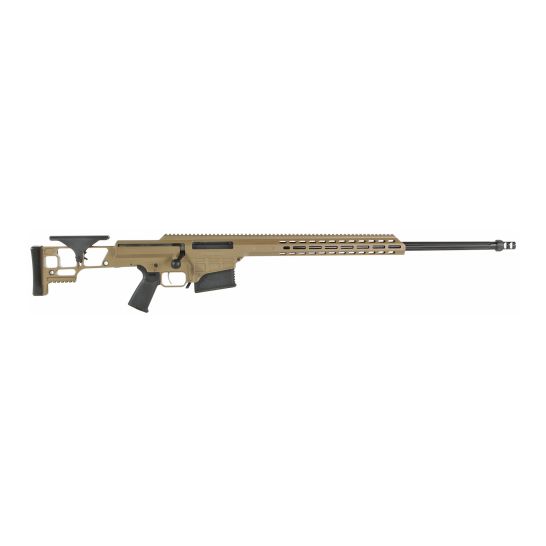
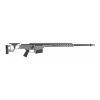
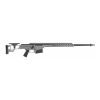
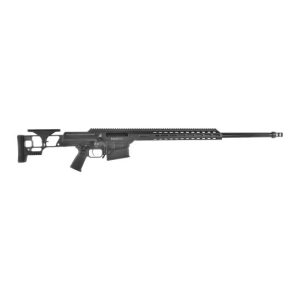
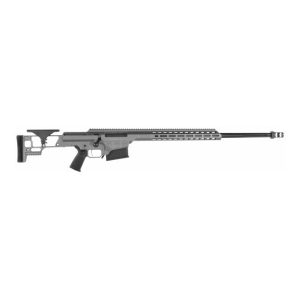
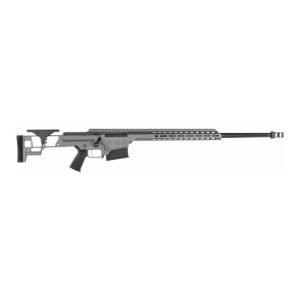
Reviews
There are no reviews yet.